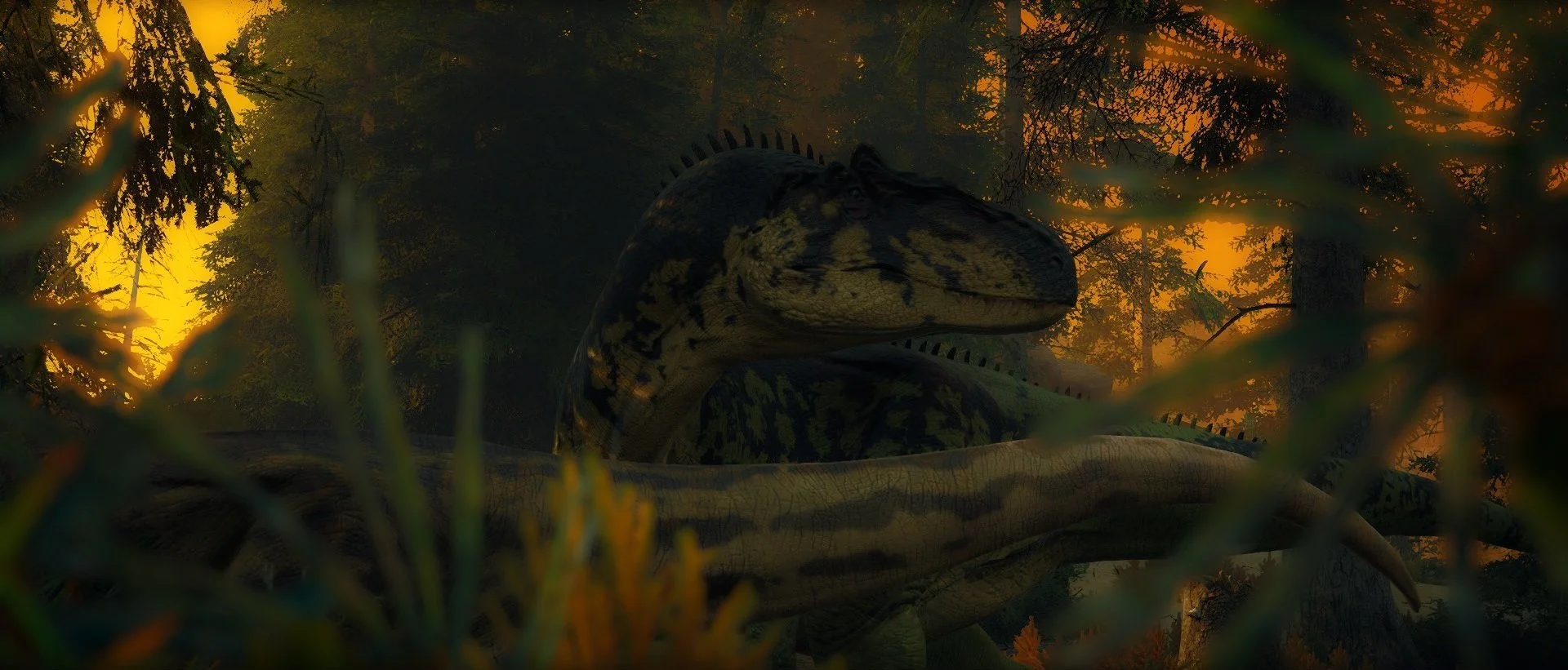
Profile info
The profiles consist of a small info panel at the start, and the rest is specifying information and behavior that has been seen in the species that you might be able to spot here in the depths of the jungle.
The profiles override our rules!
Diet tags
These diet tags explain what belongs in the species diet and what it consumes.
Cannibalistic
A cannibalistic diet consists of consuming and hunting their own species if presented with the opportunity.
The different types of cannibalism:
Cannibalistic dinosaurs can hunt, claim and contest bodies of their own species.
Semi cannibalistic dinosaurs can only claim and contest bodies of their own species if the line is below the stomach icon or to claim a POI as an apex. Semi cannibals are not allowed to hunt others of their own species.
Non cannibalistic dinosaurs cannot hunt, claim, steal from, or contest bodies of their own species.
This does not include stealing a trophy.
Carnivore
A carnivore primarily eats meat, either by hunting live prey or scavenging from dead dinosaurs & other animals.
May occasionally consume bones & decomposed remains, it generally prefers fresh meat.
The Tier numbers in a dinosaur's preferred food does not apply if the group that is going to be hunted includes offspring.
Offspring = Adolescent and under.
Herbivore
A herbivore’s main diet consists of berry bushes. Herbivorous diet can also consist of foraging roots, nuts & flowers.
Insectivore
An insectivore's main diet consists of ants, termites & larvae.
Omnivore
An omnivore has a diverse diet, consuming berries, flowers, nuts, mushrooms, clams, fish, bones & meat.
╸Carnivore omnivores are not allowed to claim or contest for berry bushes.
╸The rules C-01. Carnivores and C-02. Hunting applies to herbivore omnivores.
╸Herbivore omnivores cannot contest other carnivores for their corpses.
╸Herbivore omnivores can interact with burrows and spawn corpses.
╸If their diet allows it, they can interact with fish and shellfish.
Image showing the hunger level needed for semi cannibals in order to claim and contest bodies of their own species or to claim POIs as an apex.
Opportunistic
Opportunistic hunters will hunt anything visibly scarred (fresh full body scars) regardless of preferred food limits.
Hunger rule still applies to opportunistic hunting.
Fully beached aquatics are able to be hunted by opportunistic hunters at any health.
Piscivore
A piscivore's diet consists mainly of fish, sharks, stingrays, shellfish & starfish.
Scavenger
A scavenger’s diet consists of stealing meat and scraps from other dinosaurs' claimed food sources like corpses and bodies.
╸Scavengers' primarily feed by scavenging from others' kills and can steal from claimed bodies.
╸If an amount of sub adults/adults is not mentioned, a species with the scavenger tag can scavenge as a full group.
When stealing food, scavengers:
╸ Have to be in a group with only other scavengers.
╸ Have to steal by grabbing chunks from the body; fliers must land in order to steal.
╸ Are at the risk of getting killed. Scavengers shall not defend themselves if they get attacked, just run.
╸ 2 or 4 calls do not save the thief from being attacked.
╸ The pack that the scavenger is stealing from does not have to 3 call the thief, they cannot chase the thief beyond 3 body lengths from their claimed body.
Non scavengers do not scavenge or steal from claimed bodies, they prefer to hunt for their own food.
Image showing what fresh full body scars looks like.
Ambiamorous
Has either one or multiple mates at a time or during their lifetime.
Monogamous
Has only one mate at a time or during their lifetime.
Polygamy
Mating with multiple partners.
Types of polygamy:
Polygyny: The male mates with more than one female at the same time.
Polyandry: The female mates with multiple males.
Polygynandry: Multi-male and multi-female mating system.
Mating bonds
Hierarchies
Bonded pair
A mated pair will lead together.
Decentralized
Not one member is in charge, all lead together.
Gerontocracy
The oldest member of the group is considered the leader.
Horde/Flock
A gathering of individuals to forage and travel collectively.
Kratocracy
The strongest member of the group is considered the leader.
Matriarchal
A female member is considered the leader.
Patriatrichal
A male member is considered the leader.
Shoal
Individuals swim close together, with the biggest one dictating the direction and feeding privileges.




